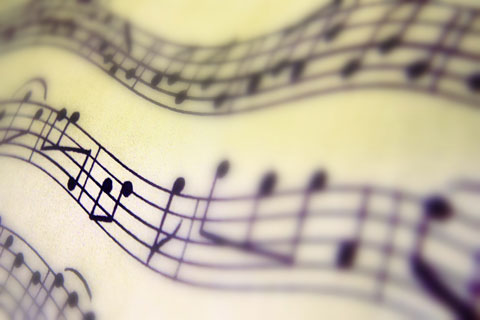What is Dyslexia?
Let me be clear from the outset – dyslexia has nothing to do with how intelligent a person is.
Sadly, there is no single definition of the condition. And, there’s no fundamental scientific understanding of the underlying cause of dyslexia despite a number of detailed theories. The condition is usually defined as someone who has significant problems in areas such as; reading, writing, spelling, numbers, short- term memory, sequencing of events, motor and/or special skills, auditory and/or visual perception. It is also very important to view the condition as a continuum; with some people,only mildly affected, while others can be seriously impaired in their daily life.
It’s also surprisingly common, as it’s thought that around 15% of people are at some point on this continuum. Also, it appears to be more common in men than women.
Here’s an excellent video simulating what someone with dyslexia might see when looking at text.
Music and Dyslexia
Dyslexia has been known to affect student’s ability to learn music, and musical instruments. Although, paradoxically, music-related therapies are sometimes used as an aid to help people with dyslexia improve their reading and maths skills. (It’s worth bearing that in mind if you are doing an online search looking for music and dyslexia related resources.)
There’s been very little proper research into the specific area of music skills and the condition. This doesn’t mean, though, that there are no effective strategies for helping a pupil.
Strategies
(With thanks to Jenny Macmillan – see Resources below). Here, at last, there is some agreement amongst all the experts – multi-sensory learning. By involving all the senses in the learning process a student with dyslexia can learn more effectively. Allow a student to listen to the piece, to practice the fingering silently as they’re hearing it, to touch the notes, to get an overall sense of the shape of the piece.
One issue for some dyslexics is the rapid processing of information. This, of course, can really affect a pupils ability to sight read, for example. However, trying to break things down into smaller chunks can sometimes help.
In the 1970s Margret Hubicki created a system which involved a colour staff. The use of colour as an aid to recognise patterns and shapes is widely used for dyslexia.
One theory on the cause of dyslexia is that it’s about timing issues in the firing of clusters of brain cells. It’s possible that this could be the reason why some dyslexics have issues with fast notes or keeping time. Some students playing in orchestras can struggle with the task of keeping count during a long section of rests. Obviously, it would help to seat them next to someone you know is good at counting.
Involvement
While it’s frustrating that there is so little basic research, there is something that I know, empirically, to be true – dyslexic people are very good at creating solutions to their own problems. So, it’s critical that you involve a dyslexic student in any solution. Remember, its a condition that can affect a lot of different aspects of their perception, and it be across a wide spectrum of severity. The most useful strategy for you both will be creating a dialogue; trying to understand where the problems are and how the various strategies are working.
Resources
Fortunately, there are a few really excellent resources online.
• Teacher guide to music and dyslexia, by The British Dyslexia Association
[www.rhinegold.co.uk/downloads/magazines/music_teacher/music_teacher_guide_music_and_dyslexia.pdf]
• Music & Dyslexia, by Jenny Macmillan
[www.jennymacmillan.co.uk/Music%20and%20Dyslexia%20for%20ISM%20Journal.pdf]
• For a simple definition of dyslexia
[http://www.bbc.co.uk/health/physical_health/conditions/dyslexia2/#what_is_dyslexia]
• International Dyslexia association
http://www.interdys.org/
• The Australian Dyslexia Association
http://dyslexiaassociation.org.au/
• Dyslexia Foundation
http://www.dyslexia-help.org/
• British Dyslexia Association
http://www.bdadyslexia.org.uk/



Hi
I have a very dyslexic son and have taught him and several other students (mainly boys) to perform on a variety of instruments. Each one is very different and so you need to adjust as needed. Some thta I have used are have the student to select their favourite colours and colour notes with them – eg blue for c, red for d etc. I have also used different shapes for each note – a circle for c, a triangle for d etc. these techniques do initially make note reading slower but the student can achieve. Another idea is to put a picture of the students favourite animal at the beggining of a line so that they realise that they must go back to the “dog” or whatever to commence reading the line of music and not go backwards and forwards.
I have many other little strategies which I use – please don’t hesitate to contactme if you would like some more information.
Regards
Johanna
Johanna, I am anticipating teaching a nine-year-old boy who is dyslexic and I am looking for helpful suggestions to help him in his learning to play piano. I would appreciate knowing any strategies that you use. Please email me with your ideas, if you are willing, so that I can make this learning situation a positive one for my student.
Thank you so very much! Janice
hi!
glad to hear that you are willing to share some helpful and successful strategies you have used for dyslexic students who have surprisingly have musical abilities waiting to be unfold or revealed!
just wondering if the color coding strategies are always applicable to any of them…is there any age range for that?
i have a dyslexic student at this time and i am a bit challenge as a teacher as this is my first time to have experienced such case..
that’s why i came across to this comments and suggestions of yours because i have been looking for some teachers who had experienced handling such cases..
i would appreciate knowing any strategies that you use. Please feel free to email me with your ideas..i just want my student to enjoy music regardless of his situation.I’m looking forward to hear from you!Thanks heaps!
marimil